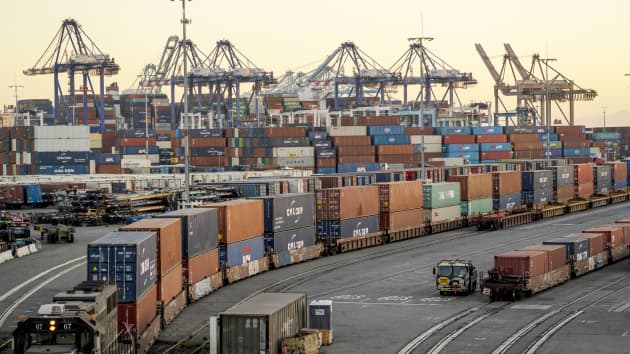What the Current Supply Chain Crisis Reveals About China-U.S. Relations in 2022
December 31, 2021
About the author:
Austin Clayton
Program Director, International Conflict Resolution Center, Washington D.C.
Associate Domain Expert, Dataminr, New York, NY
Despite continued animosity between the United States and China, global uncertainty and instability has highlighted that the two countries are often affected by global issues in similar ways. Simply put, there is a level of dependency between the economies of the two countries. This reliance has only become more apparent during the course of the pandemic and the ongoing supply chain crisis exemplifies the symbiotic nature of the relationship.
China’s supply chains have been affected by the compounding effects of several factors important to the manufacturing industry. China has experienced an energy crisis, with energy shortages forcing numerous factories to shut down. As a result, production cycles in China have been delayed and fulfillment of orders has experienced further delays due to a scarcity of shipping containers. Simultaneously, despite high inflation, consumer demand in the United States has surged. Ports in the United States are unable to keep up with the influx of shipments, and in addition to not having the resources to process container shipments, ports have run out of storage space for containers. This problem has been exacerbated by a shortage of truck drivers, so the number of inbound shipments exceeds what logistics companies are able to distribute.
For China, the supply chain crisis has meant a disruption in port activities as well. In addition to the so-called “container crisis,” several of China’s ports have experienced closures due to concerns over the spread of the COVID-19 coronavirus across international borders. The closure of ports may seem extreme, but it is in line with China’s zero-Covid policy.
While container ships might not be on the mind of an average consumer, this logistical nightmare directly impacts customers. Delays in the shipment of critical materials, such as semiconductors, have meant production delays for in-demand goods, spurring the expansion of a “reseller” industry in which those who have acquired in-demand goods sell products for an often significantly higher price. Other companies have turned to air freight for their products in an attempt to reduce the delays in international commerce. Shipments by air is significantly more expensive, increasing the cost for companies, which then pass the additional expense on to the consumer.
Shipping containers in the Port of Los Angeles in Los Angeles, California, U.S., on October 13, 2021
(Source: cnbc.com)
Generalizing all of these factors, global markets are experiencing levels of inflation that harm the economic stability and well-being of people across the globe. Businesses will be forced to close if they cannot find solutions to supply chain issues, increasing levels of unemployment, which will cause a secondary wave of economic impacts.
These problems are on the agenda of both the United States and China, as both are aware of the secondary and tertiary effects of uncertainty in an industry that does not tolerate instability. Looking into the next year, the U.S. and China will have to come together and work out new or improved trade policies and continue to address a global pandemic and its effects across a wide range of industries. The future is unknown, but it is clear that the world’s largest economies must address these serious issues because of their implications for all citizens.
This article is from the December issue of TI Observer (TIO), which is a monthly publication devoted to bringing China and the rest of the world closer together by facilitating mutual understanding and promoting exchanges of views. If you are interested in knowing more about the December issue, please click here:
—————————————————————
ON TIMES WE FOCUS.
Should you have any questions, please contact us at public@taiheglobal.org
